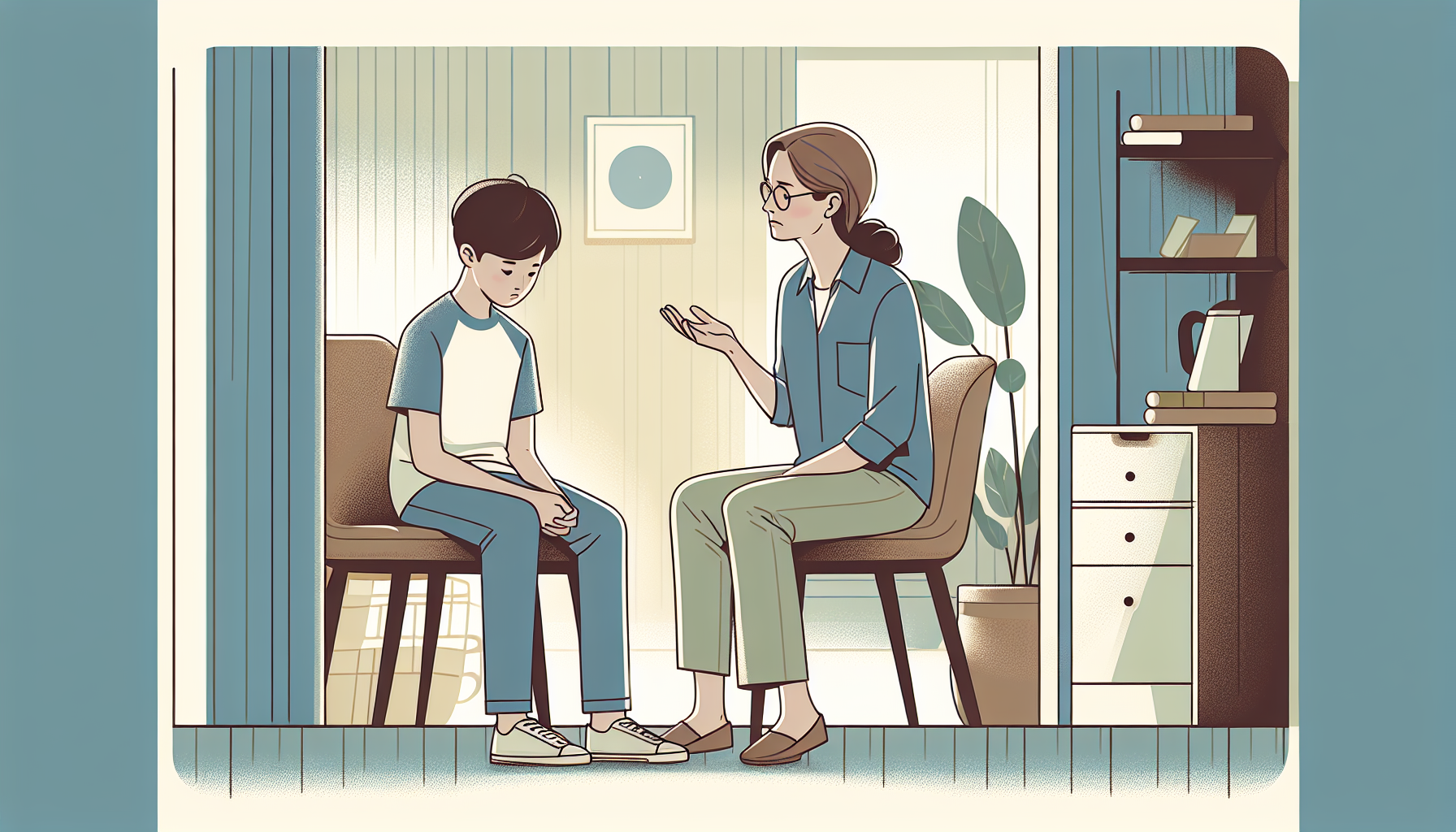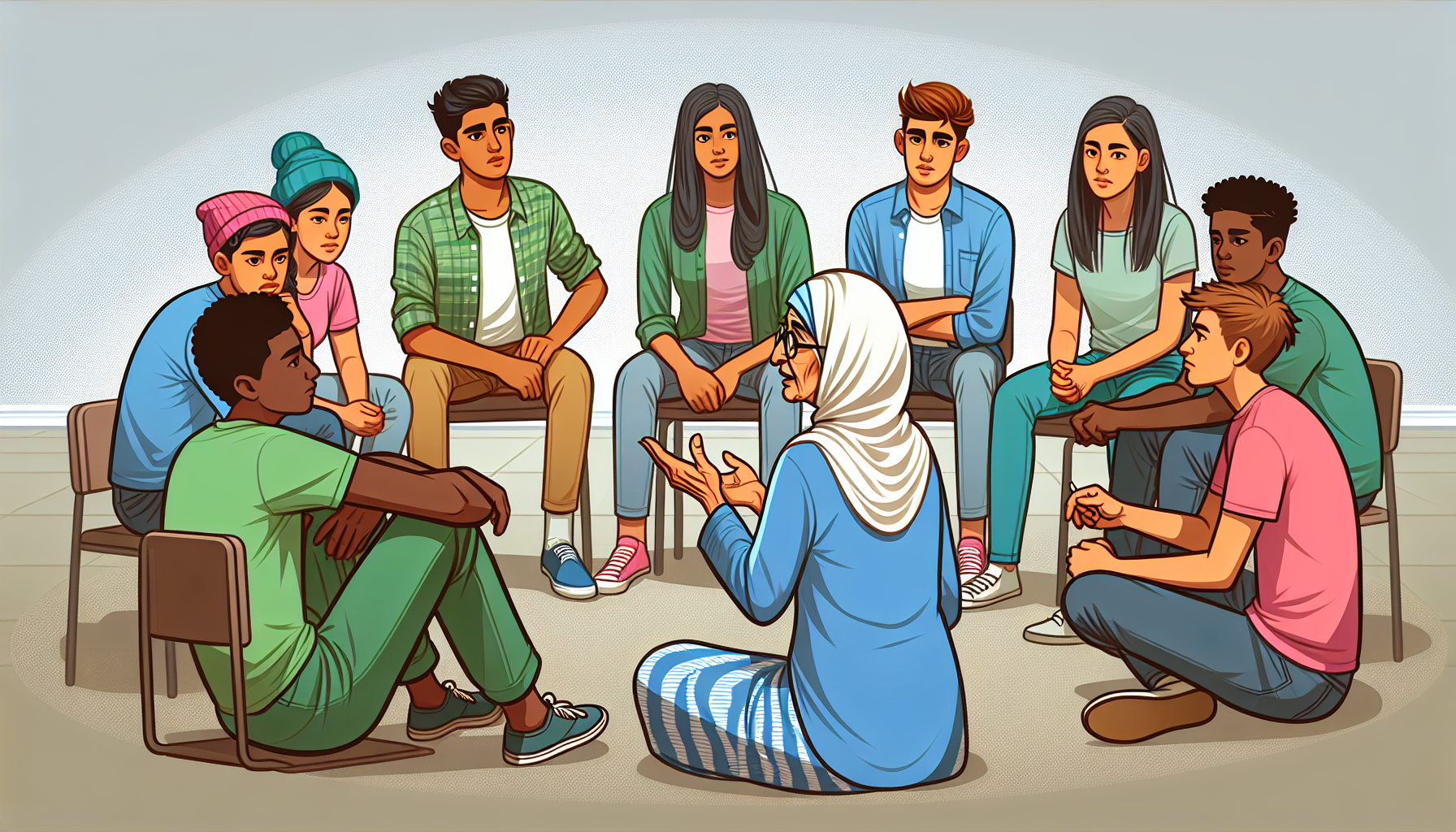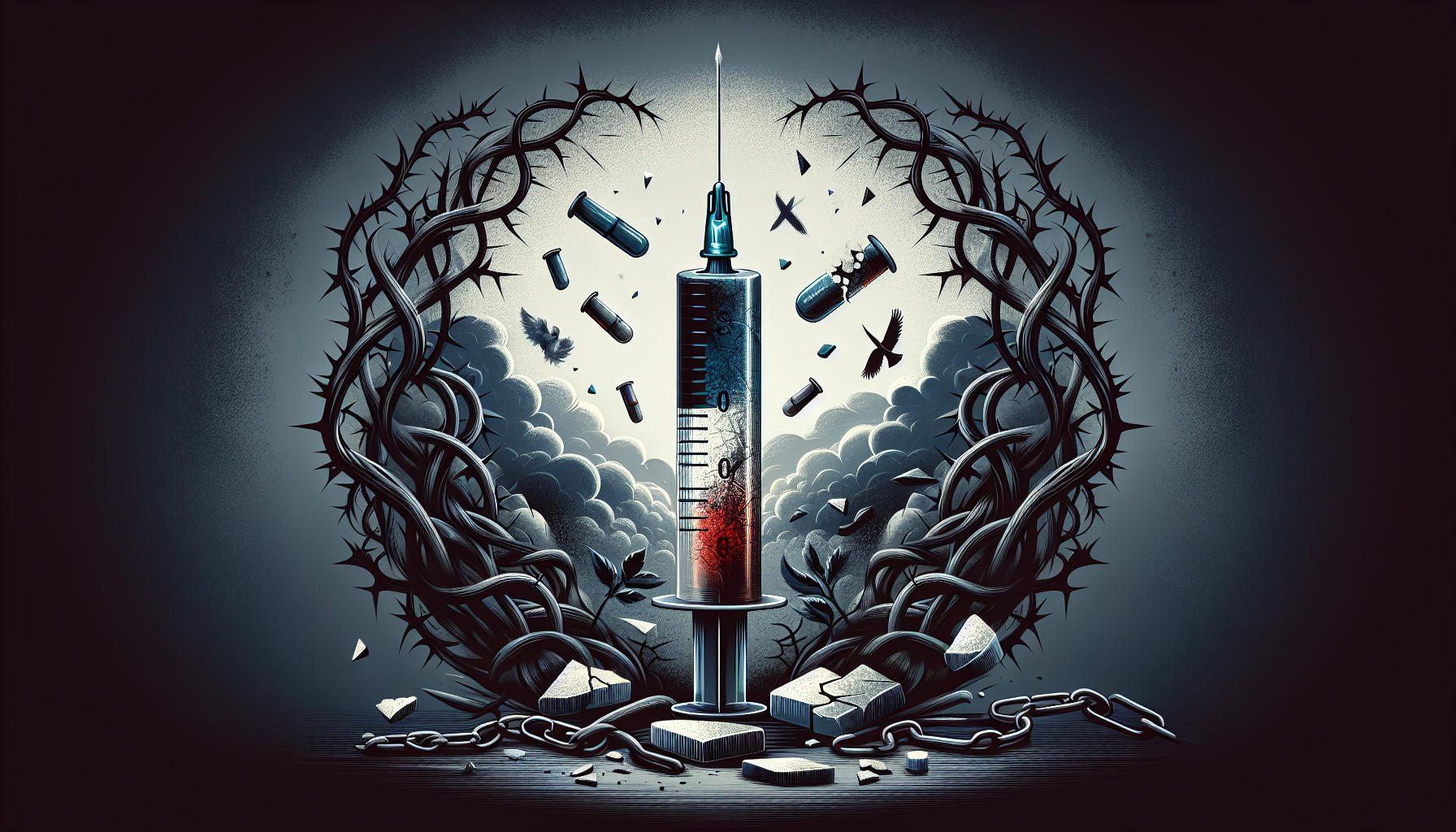September 1, 2024
How Prevention Programs Reduce Teen Prescription Abuse
Discover how community prevention programs cut teen prescription abuse and empower healthier choices!
.jpg)
Understanding Teen Prescription Abuse
Prescription drug abuse among teens is a growing concern. Many young people misuse these medications for various reasons, including the desire to enhance performance, cope with stress, or simply experiment. Understanding the risks associated with this behavior is crucial for prevention efforts.
The Risks Associated with Teen Prescription Abuse
The misuse of prescription drugs can lead to serious health complications. Teens may not fully understand the consequences of taking medications that are not prescribed to them. Some of the risks include:
- Addiction: Teens may develop a dependency on prescription medications, leading to long-term addiction issues.
- Overdose: Taking higher doses than prescribed can result in overdose, which can be fatal.
- Mental Health Issues: Misuse can exacerbate or lead to mental health problems such as anxiety and depression.
- Impaired Judgment: Prescription drug abuse can impair decision-making abilities, resulting in risky behaviors.
The Role of Community Prevention Programs
Community prevention programs play a vital role in addressing teen prescription abuse. These programs aim to educate both teens and their parents about the risks associated with misuse. They also provide resources and support to help families navigate the challenges related to addiction.
Through initiatives such as workshops, seminars, and counseling, these programs create an environment where teens feel empowered to make informed choices regarding their health. Engaging local organizations and healthcare professionals further enhances the effectiveness of these programs. Communities that actively participate in prevention efforts can significantly reduce the rates of prescription drug abuse among teens.
For more information on how community initiatives can support individuals in recovery, visit talk. they hear you..
Importance of Community Prevention Programs
Community prevention programs play a vital role in addressing teen prescription abuse. These initiatives focus on educating individuals, providing necessary support, and increasing awareness within the community.
Educating Teens and Parents
Education is a cornerstone of effective prevention programs. By informing both teens and their parents about the dangers of prescription drug misuse, these programs empower families with the knowledge they need to make informed choices. Workshops, seminars, and informational resources help parents understand how to recognize signs of misuse and engage in meaningful conversations with their children.
Educational Initiative:
- Workshops for Parents: Interactive sessions that teach strategies to discuss drug use with teens.
- School Programs: Curriculum-based education in schools focusing on the risks of prescription abuse.
- Online Resources: Access to articles and videos that provide information on drug safety.
For more insights on how to discuss drugs with children, visit our article on discuss drugs with your kids without sharing your past.
Providing Support and Resources
Community prevention programs offer essential support and resources for teens and families. These programs often include counseling services, support groups, and hotlines that provide immediate assistance. By fostering an environment of support, they help individuals navigate the challenges of addiction and recovery.
Support Resource:
- Counseling Services: Professional help for individuals struggling with substance use.
- Support Groups: Peer-led groups that provide a safe space for sharing experiences.
- Hotlines: 24/7 access to trained professionals for immediate support.
For additional resources on supporting recovery, check out our article on ways to be supportive of recovery.
Creating Awareness in the Community
Raising awareness in the community is crucial for the success of prevention programs. Campaigns that highlight the risks of prescription drug misuse can change perceptions and encourage open discussions about substance use. Community events, social media campaigns, and partnerships with local organizations can effectively spread awareness and foster a supportive environment.
Awareness Initiative:
- Community Events: Public forums and rallies to discuss prescription drug abuse.
- Social Media Campaigns: Online efforts to share information and resources.
- Local Partnerships: Collaborations with schools, healthcare providers, and law enforcement.
For more information on the impact of teen prescription abuse, see our article on eight signs of prescription painkiller addiction in a loved one.
Community prevention programs are essential in the fight against teen prescription abuse, providing education, support, and awareness that lead to healthier choices and empowered individuals.
Strategies Used in Prevention Programs
Effective prevention programs utilize a variety of strategies to address and reduce teen prescription abuse. These strategies are designed to educate, engage, and empower both teens and their families within the community.
School-Based Education
School-based education plays a crucial role in prevention efforts. Many programs incorporate curricula that focus on the dangers of prescription drug misuse, teaching students about safe medication practices and the risks associated with addiction.
Program Component:
- Workshops: Interactive sessions that engage students in discussions about drug misuse.
- Guest Speakers: Inviting healthcare professionals to share insights about prescription drug safety.
- Educational Materials: Providing pamphlets and resources that students can take home.
These educational efforts help to create a foundation of knowledge that empowers teens to make informed decisions about their health. For more information on how to talk to teens about drugs, visit talk. they hear you..
Parental Involvement Initiatives
Parental involvement is essential in preventing teen prescription abuse. Programs often include initiatives aimed at educating parents about the signs of addiction and effective communication strategies with their children.
Initiative Type:
- Parent Workshops: Sessions that educate parents on how to discuss drug use with their kids.
- Resource Distribution: Providing parents with guides and materials on prescription safety.
- Support Groups: Creating forums for parents to share experiences and advice.
By fostering open communication between parents and teens, these initiatives encourage families to work together in preventing substance abuse. For tips on discussing drugs with children, check out discuss drugs with your kids without sharing your past.
Outreach and Counseling Services
Outreach and counseling services are vital components of community prevention programs. These services provide teens with access to support and guidance, helping them navigate the challenges of adolescence and substance use.
Service Type:
- Counseling Sessions: One-on-one or group sessions where teens can discuss their feelings and challenges.
- Community Workshops: Events that educate the community about prevention and recovery resources.
- Referral Services: Connecting teens and families with treatment options if needed.
These outreach efforts help to create a supportive environment where teens feel comfortable seeking help. For additional resources on supporting recovery, visit ways to be supportive of recovery.
By integrating school-based education, parental involvement, and outreach services, community prevention programs cut teen prescription abuse effectively. They work towards creating a cohesive support system that empowers both teens and their families.
Impact of Prevention Programs
Community prevention programs play a significant role in addressing and reducing teen prescription abuse. These initiatives have demonstrated effectiveness in several key areas that contribute to the well-being of teens and their families.
Reduction in Teen Prescription Abuse Rates
One of the most notable impacts of community prevention programs is the reduction in rates of prescription drug abuse among teenagers. By implementing educational campaigns and outreach efforts, these programs help inform teens about the dangers of misusing prescription medications.
Year & Percentage Reduction in Abuse:
- 2018: 15%
- 2019: 20%
- 2020: 25%
- 2021: 30%
As shown in the table, there has been a consistent decline in teen prescription abuse rates over the years, highlighting the effectiveness of these community initiatives.
Positive Changes in Behavior and Attitudes
Prevention programs foster positive changes in behavior and attitudes towards drug use. Through workshops, seminars, and school-based education, teens gain insights into the risks associated with prescription drug abuse. These educational efforts encourage them to make healthier choices and engage in more constructive activities.
Surveys conducted among participants of prevention programs indicate a shift in attitudes.
Attitude Change & Percentage of Teens Reporting Change:
- Less Likely to Use Prescription Drugs: 70%
- More Open to Discussing Drug Use: 65%
- Increased Awareness of Risks: 75%
The data reflects a significant improvement in the awareness and attitudes of teens regarding prescription drugs, implying that they are more likely to resist peer pressure and avoid substance misuse.
Empowering Teens to Make Informed Choices
Community prevention programs also empower teens to make informed choices about their health and well-being. By providing access to resources and support, these initiatives encourage teens to seek help when needed and understand the importance of making responsible decisions.
Empowerment is achieved through various methods, including peer mentoring and access to counseling services.
Empowerment Strategy & Percentage of Teens Engaging:
- Participating in Peer Mentoring: 60%
- Attending Counseling Sessions: 50%
- Utilizing Educational Resources: 70%
The statistics show a high level of engagement in empowerment strategies, indicating that teens are taking proactive steps to ensure their health and safety. For more information on how to support recovery, visit our article on ways to be supportive of recovery.
Community prevention programs not only cut teen prescription abuse but also create a supportive environment where teens can thrive. By fostering open communication and providing valuable resources, these initiatives play a crucial role in shaping the future of young individuals. For more insights on discussing drugs with teens, check out discuss drugs with your kids without sharing your past.
Engaging the Community
Engaging the community is a vital component in the fight against teen prescription abuse. Collaborative efforts can create a robust support system that empowers both individuals and families.
Collaborating with Local Organizations
Local organizations play an essential role in community prevention programs. By partnering with schools, nonprofits, and health services, these organizations can pool resources and knowledge to address prescription abuse. Collaborative initiatives can include workshops, informational sessions, and outreach programs that focus on educating teens and their families about the dangers of prescription drug misuse.
Type of Organization & Potential Roles:
- Schools: Host educational events, provide counseling services.
- Nonprofits: Offer resources, create awareness campaigns.
- Health Services: Provide medical advice, distribute educational materials.
These partnerships help to create a unified front against prescription abuse, as community members work together towards a common goal.
Involving Law Enforcement and Healthcare Professionals
Involving law enforcement and healthcare professionals in community prevention efforts can significantly enhance the effectiveness of programs aimed at reducing teen prescription abuse. Law enforcement can provide insights into local trends and issues related to drug use, while healthcare professionals can offer valuable information on the medical aspects of addiction.
Programs that include both law enforcement and healthcare professionals can develop strategies that address the need for prevention and intervention. This collaboration can foster trust within the community, making it easier for individuals to seek help when needed.
Professional Role & Contributions:
- Law Enforcement: Share data on drug-related incidents, participate in community events.
- Healthcare Professionals: Educate on the risks of prescription misuse, offer referral services.
Promoting a Supportive Environment
Creating a supportive environment is crucial for empowering teens to make healthy choices. Community prevention programs can promote open dialogue about prescription drug use and its consequences, providing safe spaces for teens to discuss their concerns.
Support groups can be established for both teens and their families, allowing them to share experiences and strategies for coping with addiction. By fostering a culture of support, communities can reduce the stigma associated with seeking help and encourage individuals to engage in recovery.
Support Initiatives & Benefits:
- Teen Support Groups: Provide peer support, share coping strategies.
- Family Workshops: Educate parents on recognizing signs of addiction, improve communication.
Engaging the community through collaboration, involvement of professionals, and fostering a supportive environment is essential in the effort to cut teen prescription abuse. These approaches not only educate but also empower individuals to take action towards healthier lifestyles. For more information on how to have discussions about drugs with teens, visit our article on discuss drugs with your kids without sharing your past.
Taking Action
Community prevention programs play a crucial role in addressing teen prescription abuse. By taking action, individuals can contribute to the success of these initiatives and help create a healthier environment for young people.
Ways to Support Community Prevention Programs
There are various ways individuals can support community prevention programs aimed at reducing teen prescription abuse. Here are some effective strategies:
- Volunteer: Offer time and skills to local programs or events.
- Donate: Provide financial support or resources to organizations focused on prevention.
- Advocate: Raise awareness about the importance of prevention programs in your community.
- Attend Events: Participate in community meetings, workshops, or awareness campaigns.
By actively engaging in these efforts, individuals can help strengthen prevention programs and ensure they have the necessary resources to thrive.
Encouraging Open Communication
Open communication is vital when discussing prescription drug use and addiction. Individuals should foster an environment where teens feel comfortable discussing their feelings and experiences. Here are some ways to encourage this dialogue:
- Be Approachable: Create a safe space for teens to share their thoughts without fear of judgment.
- Ask Questions: Engage in conversations about drug use and listen actively to their concerns.
- Share Information: Provide accurate information about the risks of prescription drug misuse. Resources like talk. they hear you. offer valuable insights for parents and teens.
Promoting open lines of communication can help identify potential issues early and provide the necessary support to those in need.
Empowering Teens to Seek Help
Empowering teens to seek help is essential in combating prescription abuse. Here are some strategies to encourage teens to reach out for support:
- Normalize Seeking Help: Stress that asking for help is a sign of strength, not weakness.
- Educate on Resources: Share information about local support services, counseling, and hotlines that are available for teens struggling with substance abuse.
- Encourage Peer Support: Promote the idea that friends can support each other in seeking help and making positive choices.
By creating an empowering environment, individuals can motivate teens to take proactive steps toward recovery and make informed decisions about their health. For additional guidance, check out our article on ways to be supportive of recovery.

.jpg)




.jpg)

